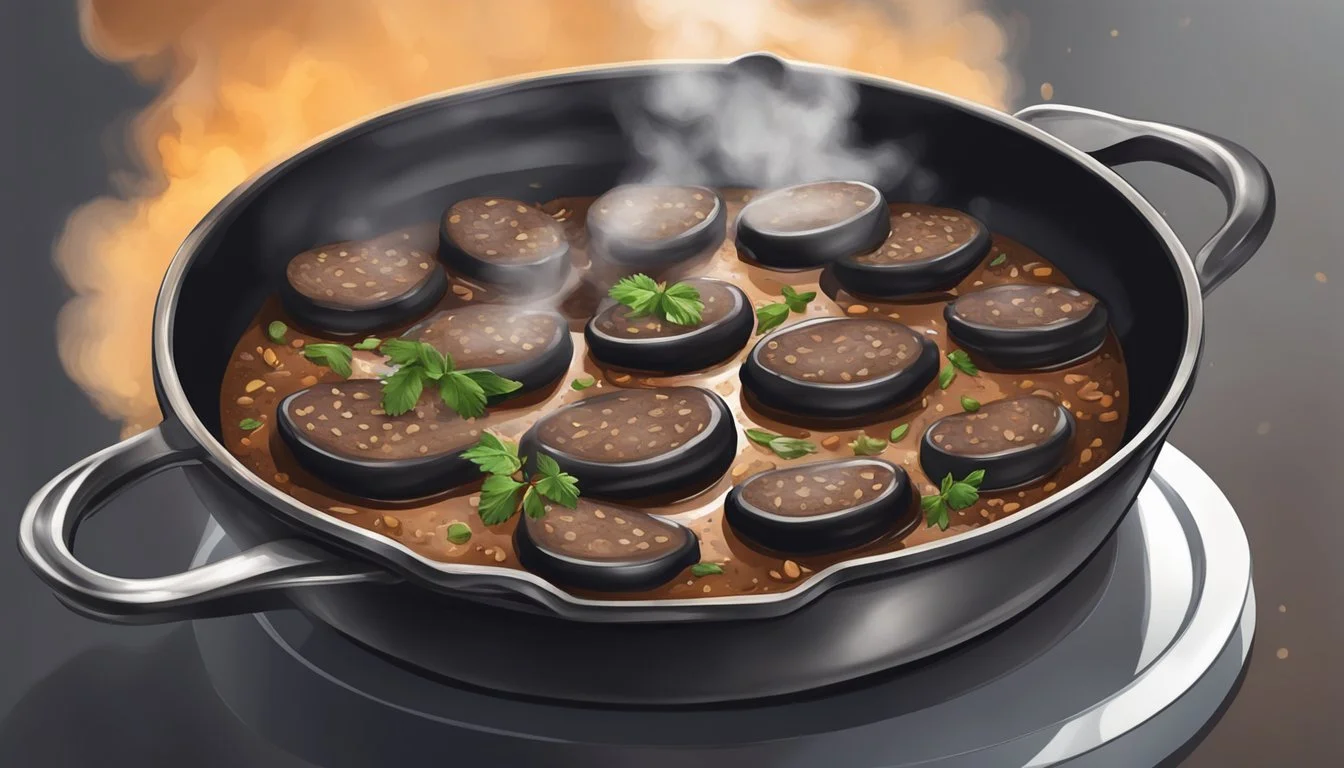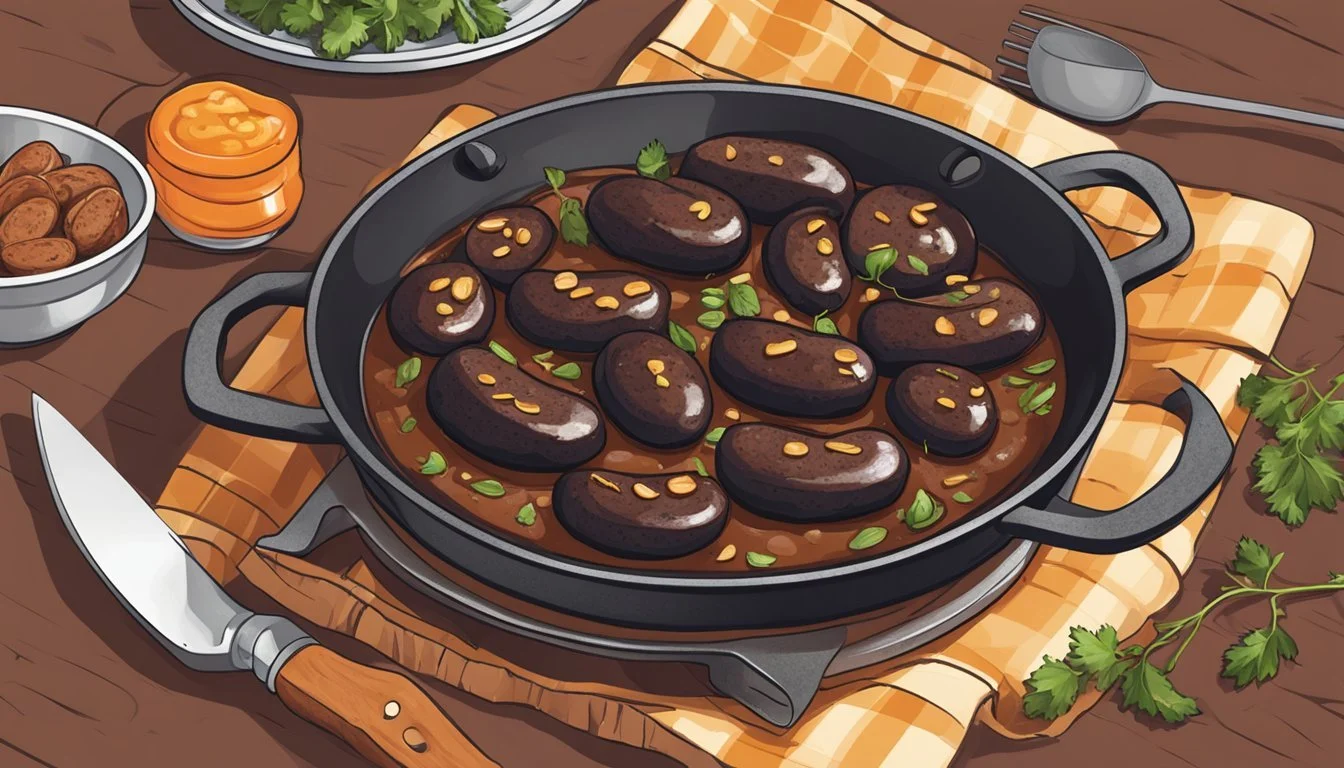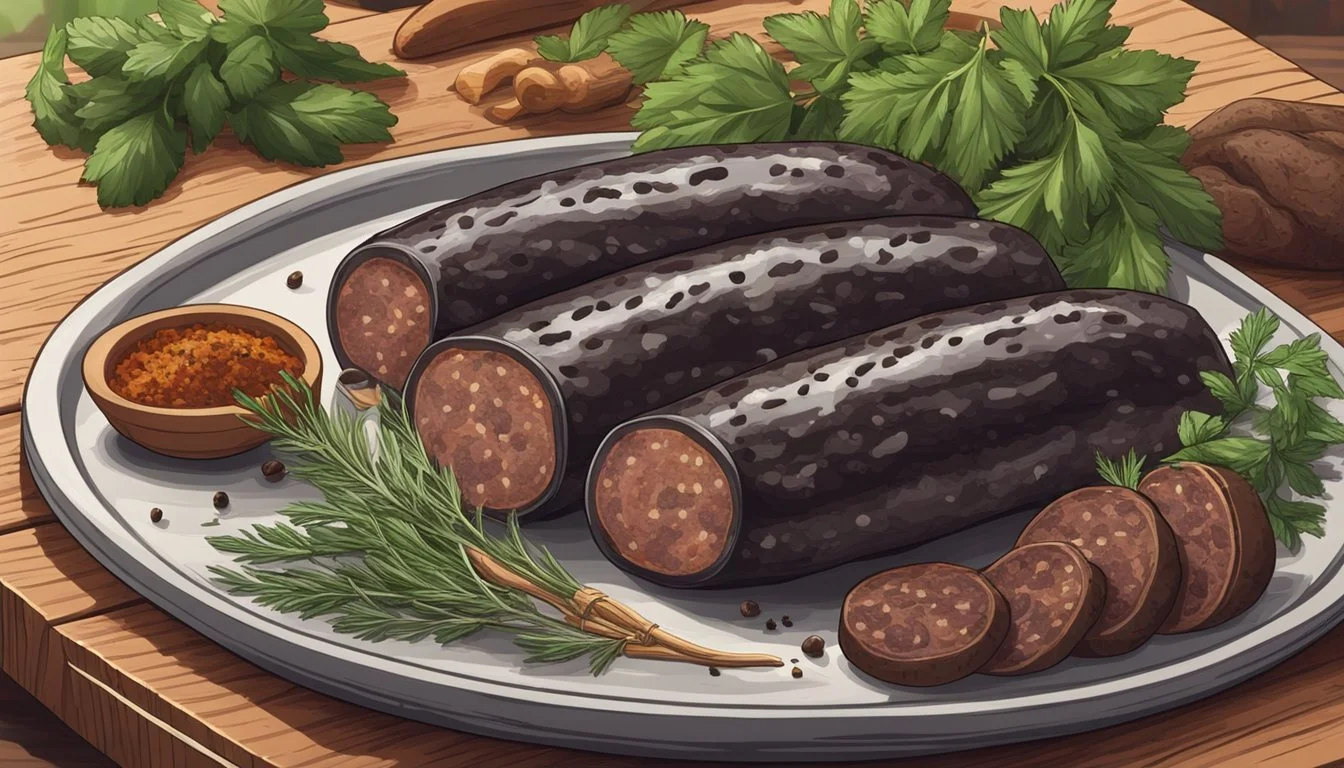Best Way to Reheat Blood Sausage
Tips for Preserving Morcilla's Unique Taste
Blood sausage, or morcilla as it's known in Spanish cuisine, is a traditional delicacy with a rich flavor profile that is deeply rooted in various cultures around the globe. Praised for its deep and pungent taste, it is an ingredient that can elevate simple dishes to complex flavor experiences. Morcilla is typically made from pork blood, fat, and a blend of spices, and can include other ingredients like rice or onions depending on regional recipes. As a staple in many cuisines, it holds a cherished place in the culinary traditions of countries like Spain, where it's often savored in stews or served simply with bread as tapas (What wine goes well with tapas?).
Reheating morcilla properly is crucial to preserve its moist texture and to maintain the integrity of its robust flavor. The process carries the potential to either enhance the sausage’s natural taste or diminish its quality if done incorrectly. Connoisseurs and chefs alike acknowledge the importance of using gentle heating methods that ensure the sausage is warmed through without causing it to dry out or lose its distinctive essence.
To experience morcilla at its best when not freshly cooked, understanding the effective reheating techniques is paramount. Whether incorporating it into stews, enjoying it alongside eggs, or savoring it as tapas, each reheating method can impact the morcilla's final texture and taste. The approach to reheating must be approached with care, taking into account factors such as heating temperature, moisture retention, and cook time to guarantee that the flavors of this storied sausage remain as compelling and authentic as they are when enjoyed fresh from the kitchen.
Understanding Morcilla
Morcilla, commonly referred to as blood sausage, has deep roots in culinary traditions, notably in Spain, and is recognized for its rich flavor profile and nutritional value. From its historical origins to its place on the modern dinner plate, Morcilla holds significance both culturally and nutritionally.
Historical Significance
Morcilla is an integral part of Spanish cuisine, often linked to traditional practices and regional variations. It's typically made with pork blood, other pork products, and a combination of spices and fillers like rice or onions. Each region in Spain might have its distinctive spin on Morcilla, reflecting local tastes and influences. The practice of using pork blood and other parts of the pig aligns with the nose-to-tail philosophy of utilizing the entire animal, rooted in the concept of sustainability and deep respect for the food sources.
Nutritional Profile
Turning to the nutritional aspects, Morcilla is rich in iron and protein, contributing to a nutrient-dense profile. Here are key nutritional components of Morcilla:
Iron: Essential for oxygen transportation in blood and muscle function.
Protein: Provides amino acids required for muscle repair and growth.
It's important to note that while Morcilla has these nutritional benefits, it should be consumed in moderation due to its fat content and caloric density. The inclusion of pork blood not only imparts a distinct flavor but also boosts the iron content, providing a beneficial element for those needing to increase their iron intake.
Preparation Fundamentals
Before reheating morcilla, one must understand the essential elements that ensure the blood sausage retains its rich flavor. These fundamentals encompass selecting quality ingredients, understanding the various morcilla types, and employing effective storage methods.
Selecting Quality Ingredients
The foundation of a flavorful reheated morcilla rests on the quality of its ingredients. Freshness is paramount. For the pork component, fresh pork blood and pork fat are essential — the former for its unmistakable flavor and the latter for texture and juiciness. Spices and seasonings, particularly salt and paprika, must be well-balanced to enhance the morcilla's taste without overpowering it. Always opt for high-quality, fresh spices to ensure the best outcome.
Morcilla Varieties
Morcilla comes in different regional varieties, each with distinct ingredients and flavors. Morcilla de Burgos, for example, is renowned for its inclusion of rice as a filler, creating a unique texture. Depending on the variety, morcilla may also contain onions or other spices which should be considered when planning the reheating process to preserve those distinctive flavors.
Storage Best Practices
Proper storage is critical for maintaining the quality of morcilla. If it is not going to be consumed immediately, morcilla should be stored in the fridge at a consistent temperature to prevent spoilage. For a longer-term option, morcilla can be kept in the freezer. Regardless of whether it is stored in the fridge or freezer, ensure it is tightly sealed to prevent exposure to air and contaminants. When reheating, it's essential to bring the sausage to room temperature before applying heat to guarantee even warming throughout.
Reheating Techniques
Reheating morcilla, or blood sausage, properly is crucial to preserve its rich flavor and moisture. The following methods detail how to do so using an oven, stovetop, or air fryer.
Oven Method
The oven provides an even and gentle heat, making it ideal for reheating morcilla without drying it out. One should preheat the oven to 350°F (175°C). The morcilla should be placed on a baking sheet, and covered with aluminum foil to retain moisture. It must be heated for about 15-20 minutes. Checking the internal temperature ensures it's warmed through without becoming dry.
Stovetop Method
For a quicker reheating process, using a frying pan to pan-fry morcilla is effective. First, one must add a small amount of water to the pan and heat it up over a medium-low flame. The sausages should then be arranged in the pan. Covering the pan with a lid helps trap steam, which prevents the sausages from losing moisture. They should be turned regularly and cooked until they're thoroughly heated, which typically takes several minutes.
Air Fryer Method
An air fryer is a convenient tool to reheat sausage promptly while achieving a slightly crisp exterior. The machine should be preheated to 350°F. The morcilla can be placed in the air fryer basket without overlapping pieces. The reheating process will take about 5-8 minutes, but one should check the sausages halfway through and shake the basket to ensure even heating. It is not necessary to use aluminum foil in this method since the quick cooking time helps preserve internal moisture.
Safeguarding Flavor and Texture
When reheating Morcilla, maintaining the characteristic rich flavor and dense texture is paramount. Careful control of temperature and time is vital to ensure the sausage retains its unique qualities.
Monitoring Reheating Temperature
Reheating Morcilla at the correct temperature is crucial to preserving its flavor profile, which includes a blend of savory and sweet notes. A moderate temperature is ideal; too high and the sausage may burst or become overly crisp, losing moisture and altering its texture.
Optimal Temperature Range: 275°F to 325°F (135°C to 163°C)
Method: Use a skillet or oven, as these methods allow for an even distribution of heat.
Time Management
The amount of time Morcilla spends reheating should be minimized to prevent drying and toughening, which can result from prolonged exposure to heat. It is essential to reheat only until the sausage is warmed through.
Skillet: Warm for 2-3 minutes per side.
Oven: Heat for 8-10 minutes, flipping halfway through.
By adhering to these temperature and time guidelines, one can ensure that the Morcilla's flavor remains robust and its texture smooth and succulent.
Morcilla Serving Suggestions
Morcilla's rich flavor pairs exceptionally well with various accompaniments and can be presented with finesse to elevate the dining experience. Below are tailored suggestions to complement its unique taste and texture.
Accompaniment Ideas
Stews: Morcilla can be sliced and added to hearty stews, where it imparts a depth of flavor. Consider stews that feature robust ingredients like lentils, chickpeas, or root vegetables.
Vegetables: Sauteed vegetables, especially onions and bell peppers, harmonize with the sausage's spiciness and can balance the dish.
Apples: The sweetness of cooked apples serves as a perfect contrast to the earthiness of morcilla, creating a fusion of flavors.
Sauerkraut: A bed of sauerkraut with its tangy profile complements the full-bodied taste of morcilla.
Potatoes: Serve morcilla with a side of roasted or boiled potatoes. The neutrality of potatoes provides a backdrop that allows the sausage's flavors to stand out.
Presentation Techniques
Bread: Present slices of morcilla atop crusty bread to absorb the juices and create a delightful textural contrast.
Eggs: For a rustic touch, morcilla can be served with eggs—either in a classical Spanish huevos rotos style or simply with a fried egg on top.
Tapas Style: Display small slices of grilled morcilla on a platter as tapas, garnished with a sprinkle of coarse salt and fresh herbs.
Rustic Platter: Arrange a platter with wedges of morcilla alongside other charcuterie (What wine goes well with charcuterie?). Add pickles and mustard for a traditional, yet sophisticated, presentation.
Each suggestion aims to maintain the integrity of the morcilla's flavor while offering a visually appealing and delicious dining experience.
Recipes Incorporating Reheated Morcilla
When incorporating reheated Morcilla into dishes, it is essential to consider the distinct flavors this Spanish blood sausage brings. These recipes highlight the smoky and rich taste of Morcilla, whether included in traditional Spanish cuisine or used in inventive fusion dishes.
Traditional Spanish Dishes
In Spain, Morcilla is a staple ingredient in many rustic dishes. One traditional approach is to add slices of reheated Morcilla to potato-based stews. The earthiness of the potatoes complements the rich taste of the blood sausage, creating a hearty and warming meal. A typical Spanish recipe might include simple ingredients such as:
Potatoes, cubed and parboiled
Reheated Morcilla, sliced into rounds
Sweet paprika for a smoky flavor
Garlic, finely chopped
Onion, diced
Salt to taste
These ingredients are sautéed together to allow their flavors to meld, resulting in a savory stew that highlights the Morcilla's distinctive taste.
Innovative Fusion Recipes
Chefs often utilize reheated Morcilla in inventive ways, combining traditional Spanish elements with other cuisines to create unique dishes. An example of such a fusion recipe could involve incorporating Morcilla into a sweet potato hash. This dish might include:
Reheated Morcilla, crumbled
Sweet potatoes, diced and roasted
Red bell peppers, sliced for a pop of color and sweetness
A hint of cumin for an additional smoky note
Eggs, fried or poached, to serve on top
By introducing Morcilla to this American breakfast staple, the dish is transformed, introducing diners to new textures and flavors while maintaining the integrity of the Spanish blood sausage.
Preservation After Reheating
When it comes to preserving morcilla after reheating, proper storage is essential to maintain its rich flavor and prevent freezer burn. Morcilla, like other types of blood sausage, requires careful handling to retain moisture and quality.
Refrigeration:
The morcilla should be allowed to cool to room temperature before storing.
Wrap the leftovers in airtight packaging or place them in sealable containers.
Consume refrigerated morcilla within two days to enjoy its optimal taste.
Freezing:
For longer storage, morcilla can be frozen, though this might slightly alter its texture.
Use heavy-duty aluminum foil or freezer bags to prevent freezer burn.
Clearly label each package with the date of freezing.
Stored this way, morcilla can last up to two months.
Thawing:
Thaw frozen morcilla in the refrigerator overnight.
Alternatively, use a microwave on a defrost setting for quicker thawing.
Never refreeze thawed morcilla as it can compromise both safety and quality.
By following these steps, one ensures that their morcilla retains its distinctive flavors and moisture, whether they're enjoying it as leftovers the next day or weeks later from the freezer.







